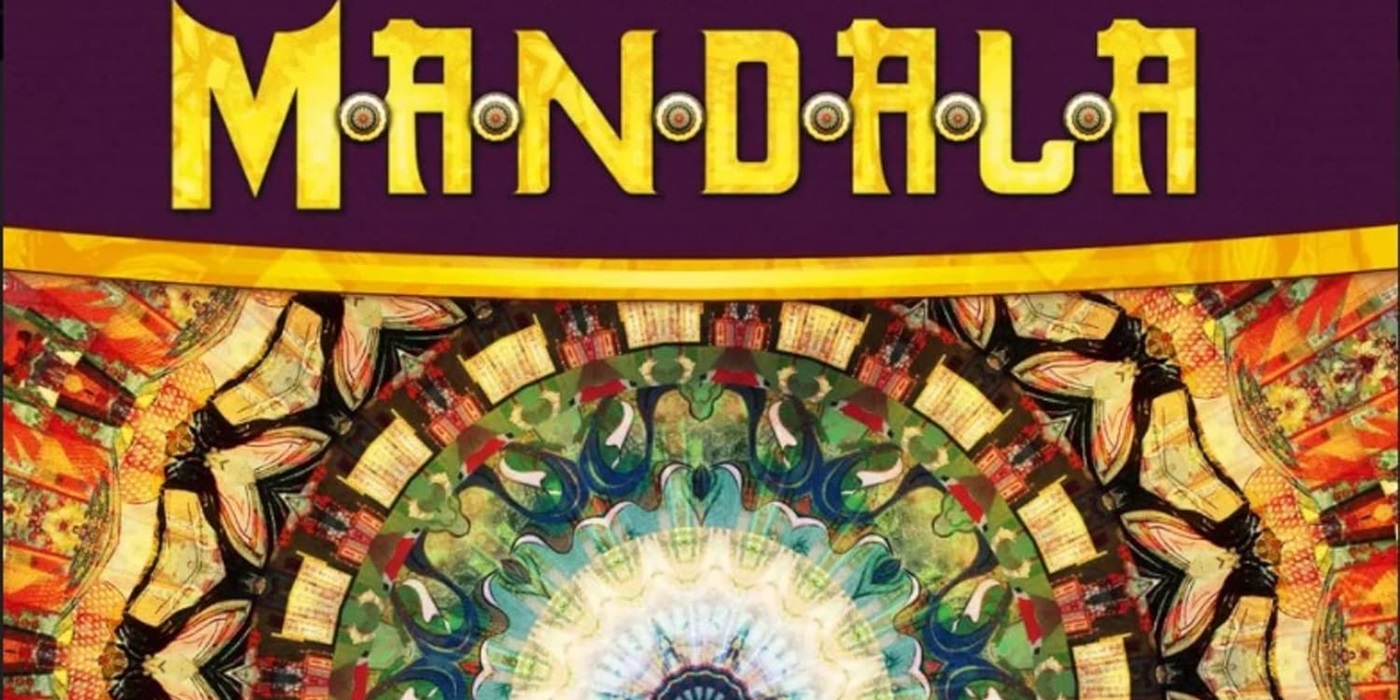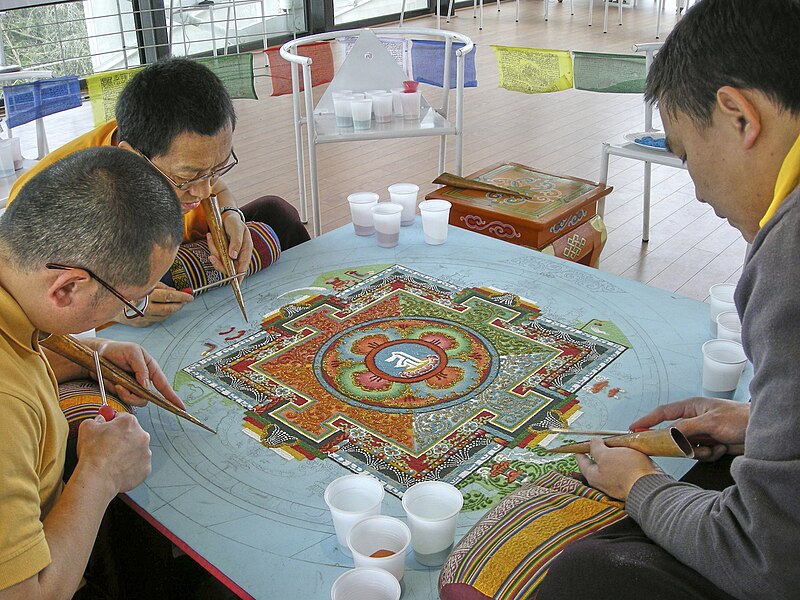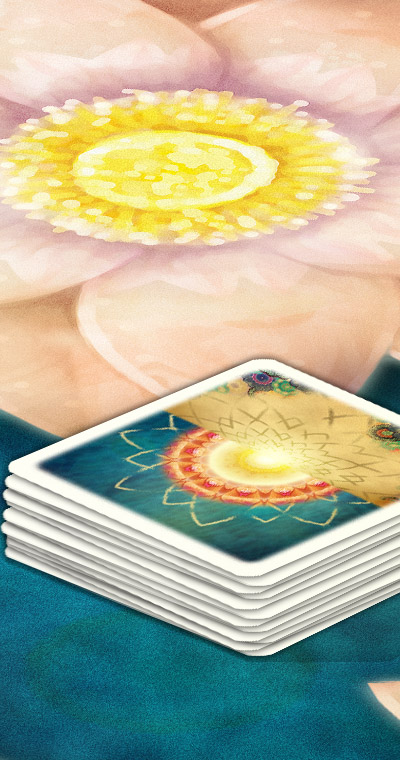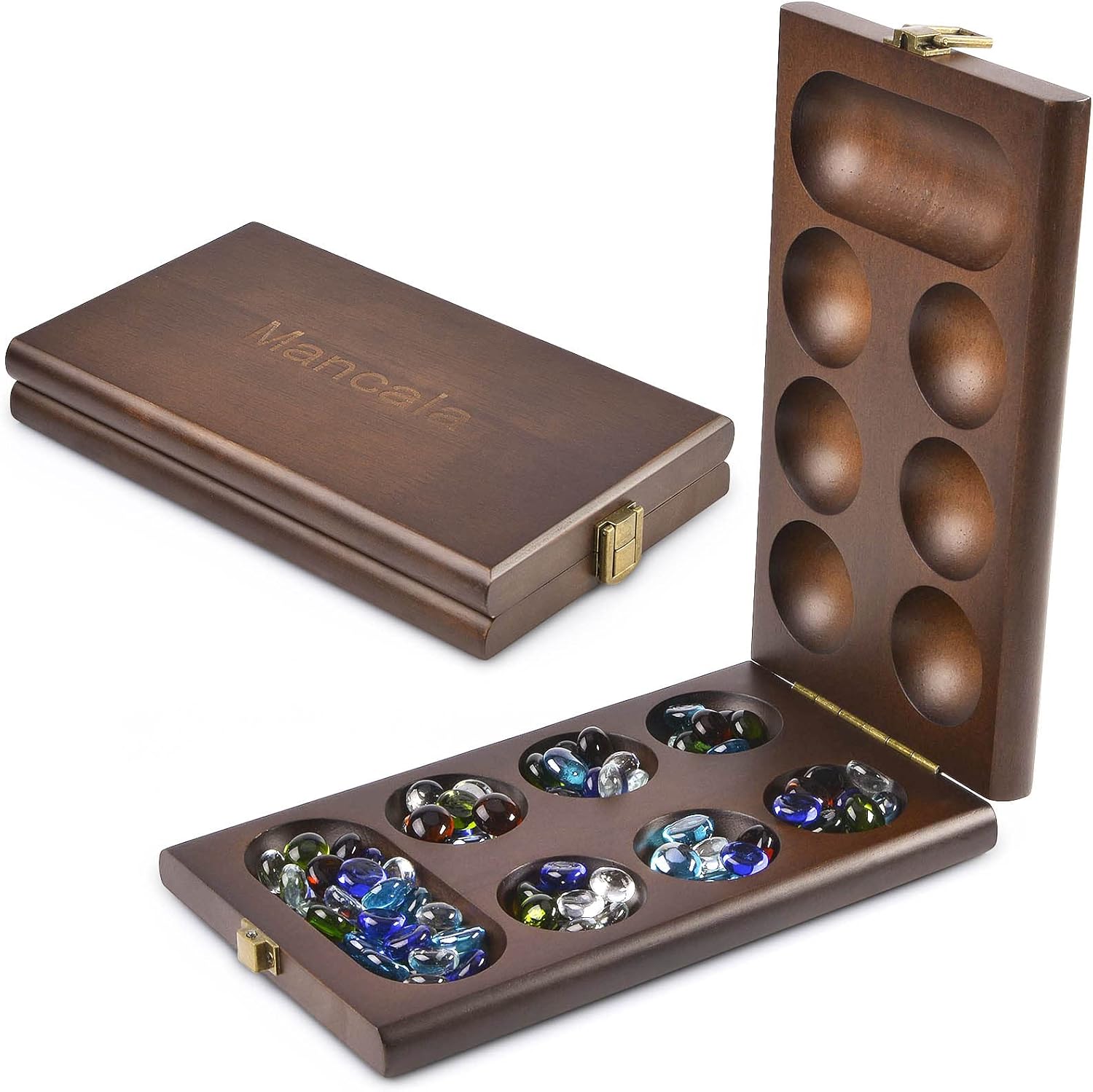The ‘Mandala’ Board Game: Meditative Art… But Make It Competitive

In Mandala, take turns building and destroying your geometric masterpiece. And you’ll want to make yours as colorful as possible!
Mandalas are geometric symbols and pictures used in various spiritual practices. They’re also very pretty to look at. And with the game board Mandala, you can try and put together your own in this game that’s equal parts beautiful and competitive.

Mandala
“The mandala is the symbol of an ancient and sacred ritual. Colored sand is laid to create a symbolic map of the world before the pattern is ceremonial destroyed and the sand cast into the river. With a slow and steady movement from your wrist, you cautiously pour the last remaining sand onto the edge of the Mandala. After standing up you look at your masterpiece, being satisfied with its looks. Black sand was a good choice as the color stands for death and renewal and that is exactly what is going to happen next. The ceremonial destruction of the Mandala represents the renunciation from the physical world as well as the rebirth. Like the next Mandala which is already starting to form in your head, ready to flow through your hands into a new and beautiful artwork.“
– Lookout Games
In this game, opponents play cards with images that represent colored sand into two Mandalas. As the mandalas grow they have colors added to them until all of the colors are accounted for and players cups are filled. At the end, points are tallied based on colors, and positions and a winner is declared.
Created by Trevor Benjamin and Brett J. Gilbert and distributed by Lookout Games, Mandala is a competitive, two-person card game. Each game takes roughly thirty minutes.
While it is definitely a competitive game that ends with a decided winner, Mandala is probably the only board game where I’ve seen the words “spiritual” and “meditation” on their website’s own description page. In part, that likely comes from the concept of a game based on making mandalas. But this is also a game where the end result is hopefully going to be something beautiful. Sure, you won’t actually design any real mandalas as you would think of them, but you’ll probably end up with a beautiful game spread nontheless.

READ MORE: ‘Monopoly’: Everything to Know When It’s time To Start a Family Feud
How to Play
To begin a game of Mandala, players must set up the play mat with a shuffled face-down draw deck of cards. Then two cards are drawn from the deck and placed face-up on each player’s “mountain” location. Finally, each player draws six cards to keep as their hand, and two more cards to place face-down in their “cup” location.
During each player’s turn they can take one of three actions. They can:
- Build a Mountain and Draw. This consists of playing one card into a mountain location, drawing up to three cards, and seeing if they’ve completed a Mandala.
- Grow Field and No Draw. Here they play cards of one color into one of their fields, do not draw a card, and check to see if they have completed a Mandala.
- Discard and Redraw. Players can discard all of their cards of one color into the discard pile and draw an equal number of cards from the deck.
Players must respect the ‘rule of color’ while playing their cards. This rule states that players cannot play a card into a mountain if that card’s color already appears in either fields. Similarly, a color cannot be played onto their field if it is already present in the mountain or their opponent’s field.
A player’s mandala is completed when cards of all six colors have been played between that player’s mountain and fields. Now that it is completed, it must be destroyed and the end-game begins.
Players now take turns choosing colors from the mountain and placing them in their river and cup locations. Once a player has six cards in their river the game is over and points are tallied. Points come from the cards collected only in the cup location, and every card is worth between one and six points. The player with the most points wins.
Is Mandala Hard to Play?
No. Despite sounding a little confusing in description, the game itself is quick to set up, easy to learn, and simple to play. It’s one of those games that will have you staring at the rules-reader with a glazed expression. But once a game is underway, you’ll have it down in under two turns.

Can Mandala Be Played Solo?
Yes! There is a solo mode, and you can find the rules on the Lookout Games website. The solo version is a simple one-page game, and is described as being more meditative than your traditional board game.
Are There Any Expansions or Sequel Games?
Mandala Flowers is that game. Players similarly have to build mandalas, but you are now also collecting creating and flowers.
Is This Related to “Mancala” At All?
No. Both games are a lot of fun, and a Google search may bring up results for both by accident. But Mancala and Mandala are very different games in almost every way. In fact, their similarities may end with them both being two-player games.
What is a Mandala?
Generally they are circular, geometric symbols that are sometimes used for focusing attention and as spiritual guidance and meditation tools. Mandalas of different varieties have a long history in Hinduism, Buddhism, Jainism and Shinto. I’m no expert, but they’re beautiful and definitely worth looking more into if you’re interested.

Happy adventuring!










